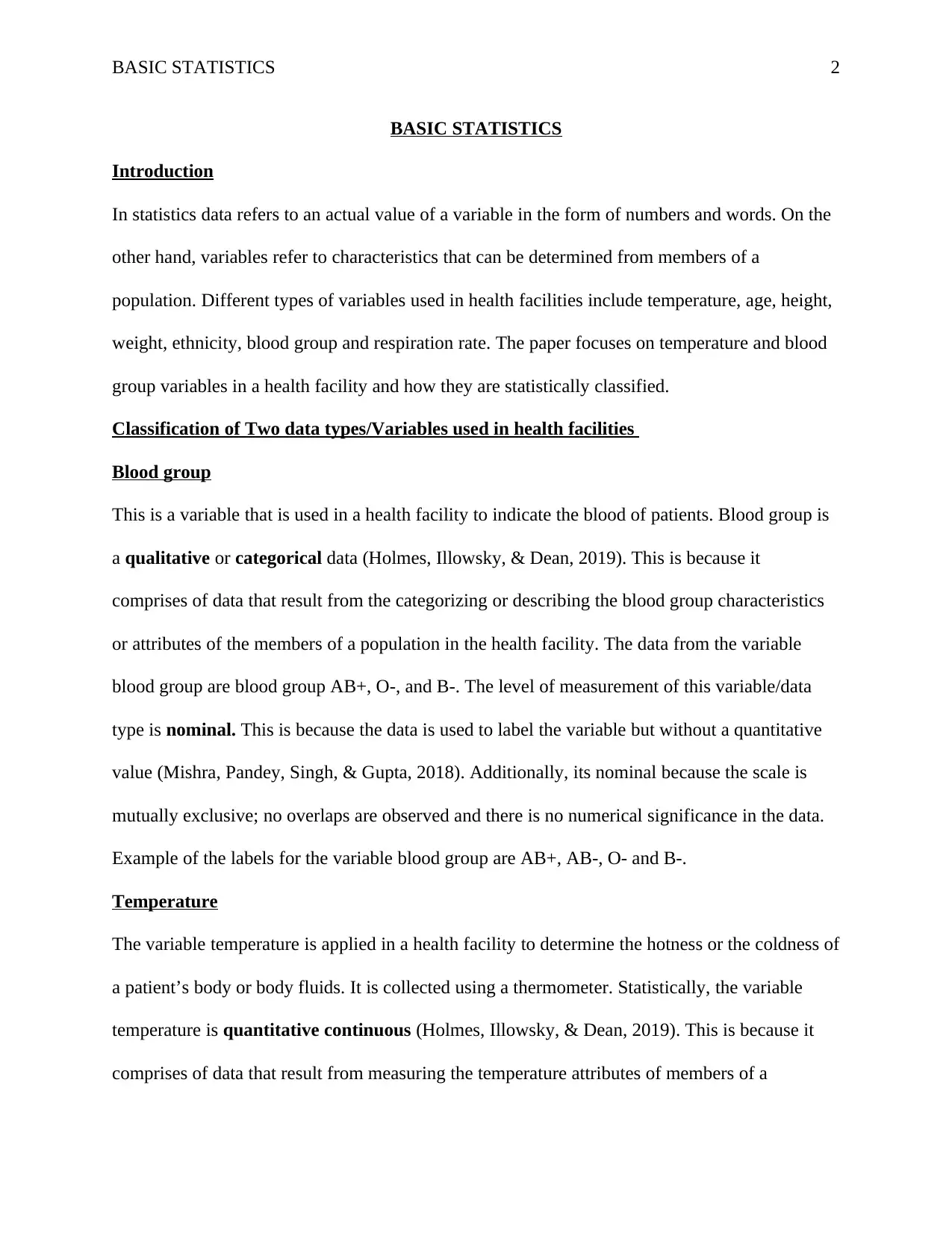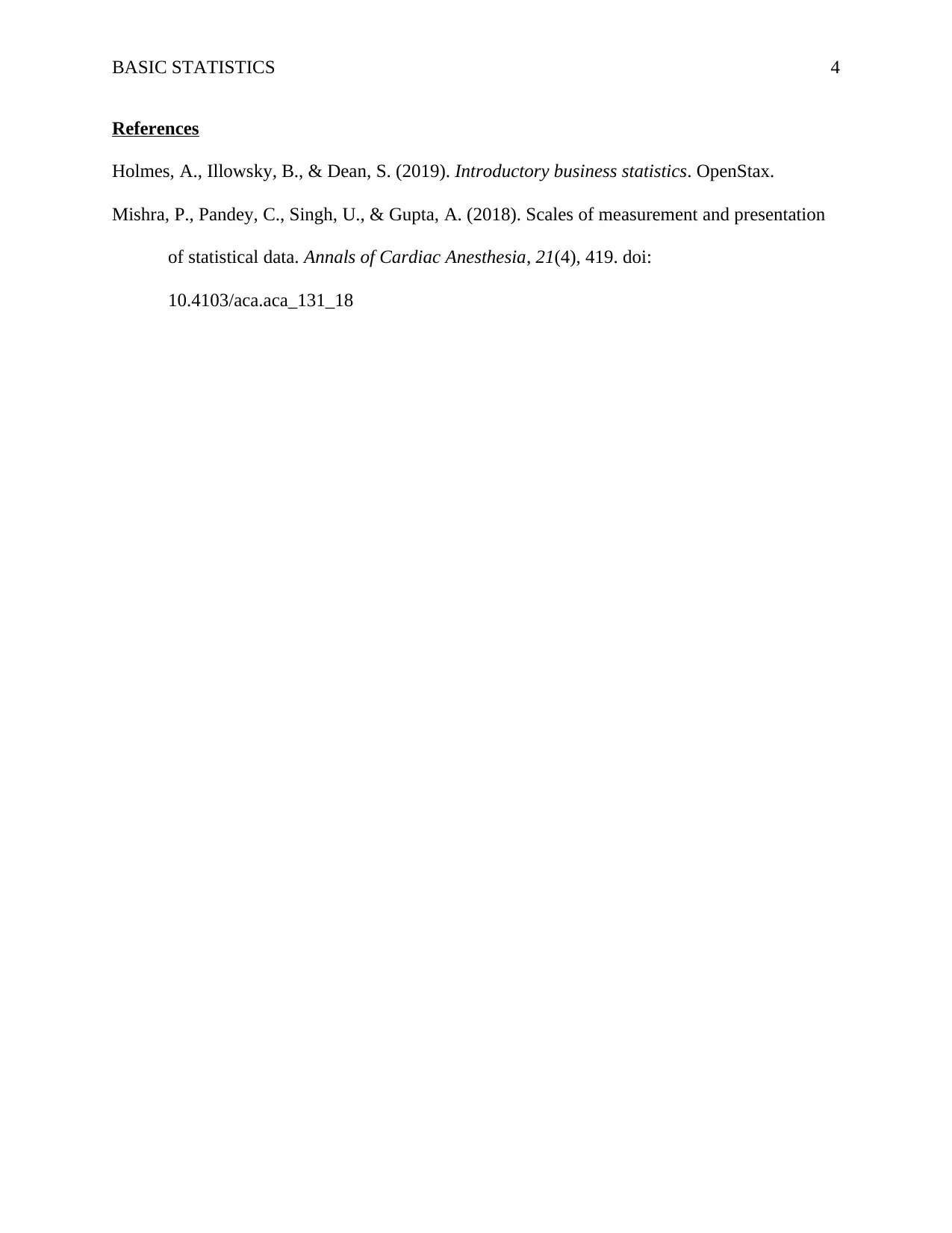Statistics Assignment: Analyzing Data Types and Sampling in Healthcare
VerifiedAdded on 2022/12/08
|4
|773
|370
Homework Assignment
AI Summary
This assignment provides an overview of basic statistical concepts, focusing on the application of these concepts within a healthcare context. The student analyzes two key variables: blood group, classified as qualitative or categorical data with a nominal level of measurement, and temperature, categorized as quantitative continuous data with an interval level of measurement. The assignment emphasizes the importance of understanding these data types for effective statistical analysis. Furthermore, it explores sampling techniques, advocating for stratified sampling as the preferred method for obtaining accurate and representative data in health facilities. Stratified sampling is chosen for its precision, accuracy, and ability to ensure representative samples, leading to cost savings. The assignment concludes by highlighting the benefits of stratified sampling over other methods such as convenience, cluster, systematic, and simple random sampling.
1 out of 4





![[object Object]](/_next/static/media/star-bottom.7253800d.svg)